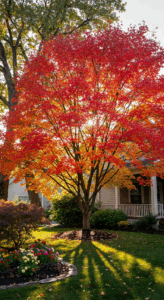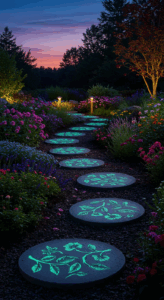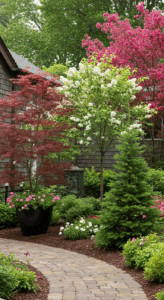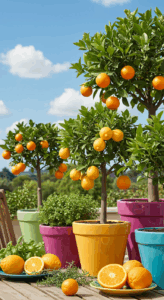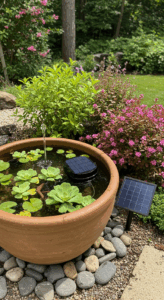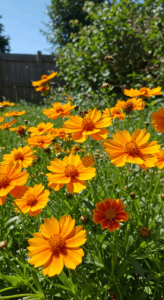1. Hostas: The Ultimate Shade Garden Staple
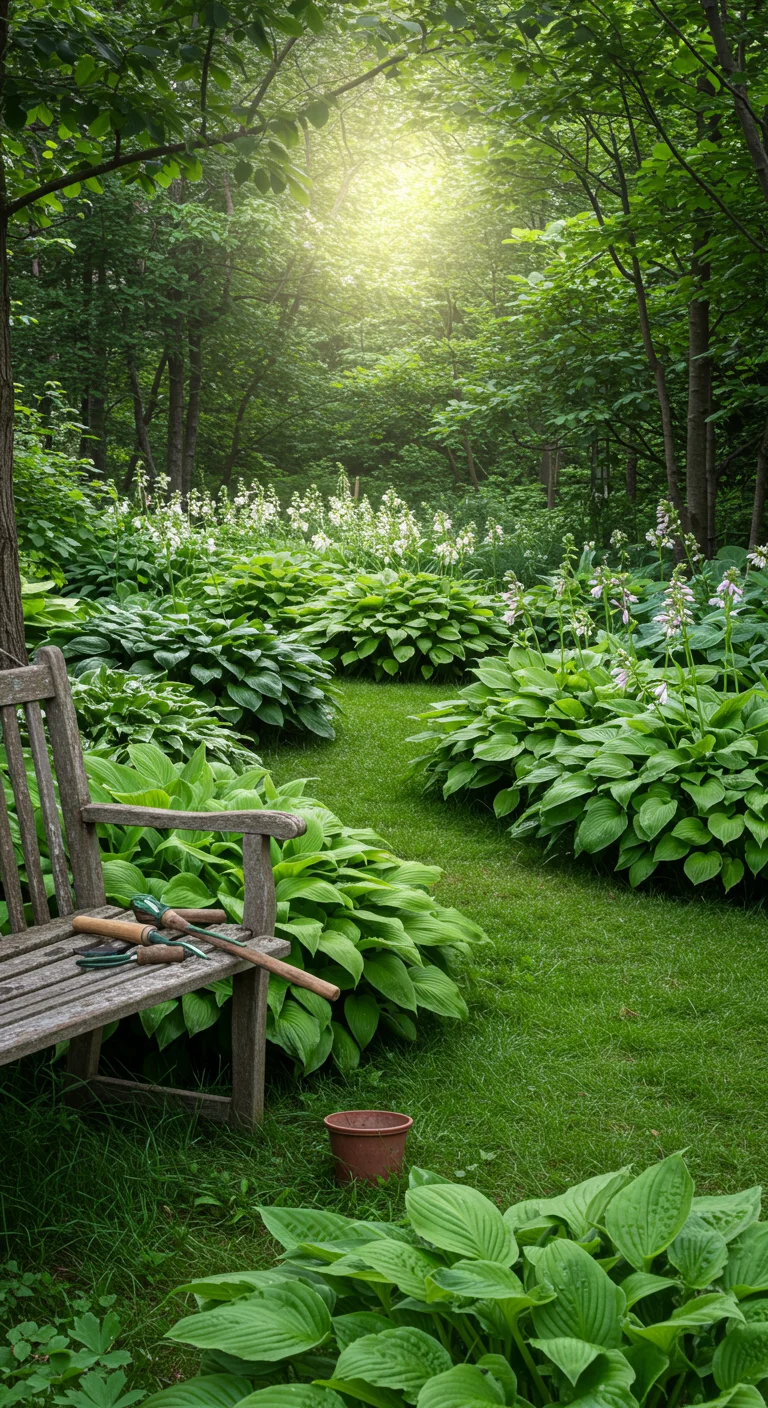
Hostas are the quintessential choice for shade gardens, celebrated for their lush foliage and impressive variety. These perennial plants thrive in low-light conditions and are available in a spectrum of sizes, shapes, and colors, ranging from vibrant greens to stunning variegated patterns. Ideal for adding texture and depth to shady spots, hostas also produce delicate flowers in summer, attracting pollinators like bees and hummingbirds. They are relatively low-maintenance, requiring minimal care beyond occasional watering and mulch to retain moisture. Additionally, hostas are deer-resistant and can thrive in a variety of soil types, making them an excellent staple for any shade garden enthusiast looking to create a resilient and beautiful landscape.
2. Astilbe: Feathered Foliage and Vibrant Blooms
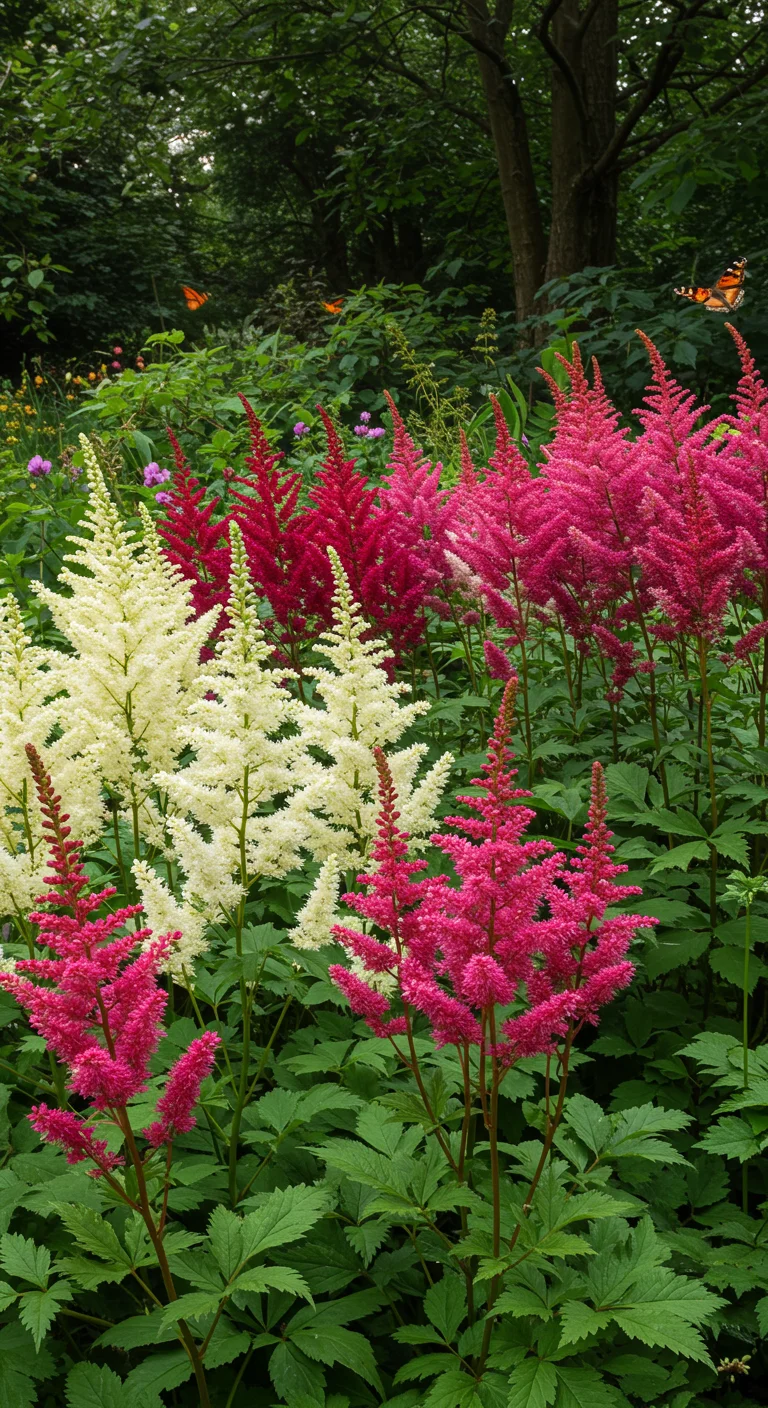
Astilbe, often celebrated for its feathery foliage and vibrant blooms, is a perennial that thrives in shaded garden spaces. With its lush, plume-like flowers ranging from white to deep red and pink, Astilbe adds a stunning visual contrast against dark green leaves. This plant prefers consistently moist soil and benefits from being planted in rich, organic matter to support its growth. Astilbe typically blooms from late spring to mid-summer, attracting pollinators like butterflies and bees, making it a great choice for biodiversity in your garden. Ideal for borders or as a centerpiece in shady areas, Astilbe provides not only aesthetic appeal but also texture and life to any shaded landscape.
3. Brunnera: The Forget-Me-Not Alternative
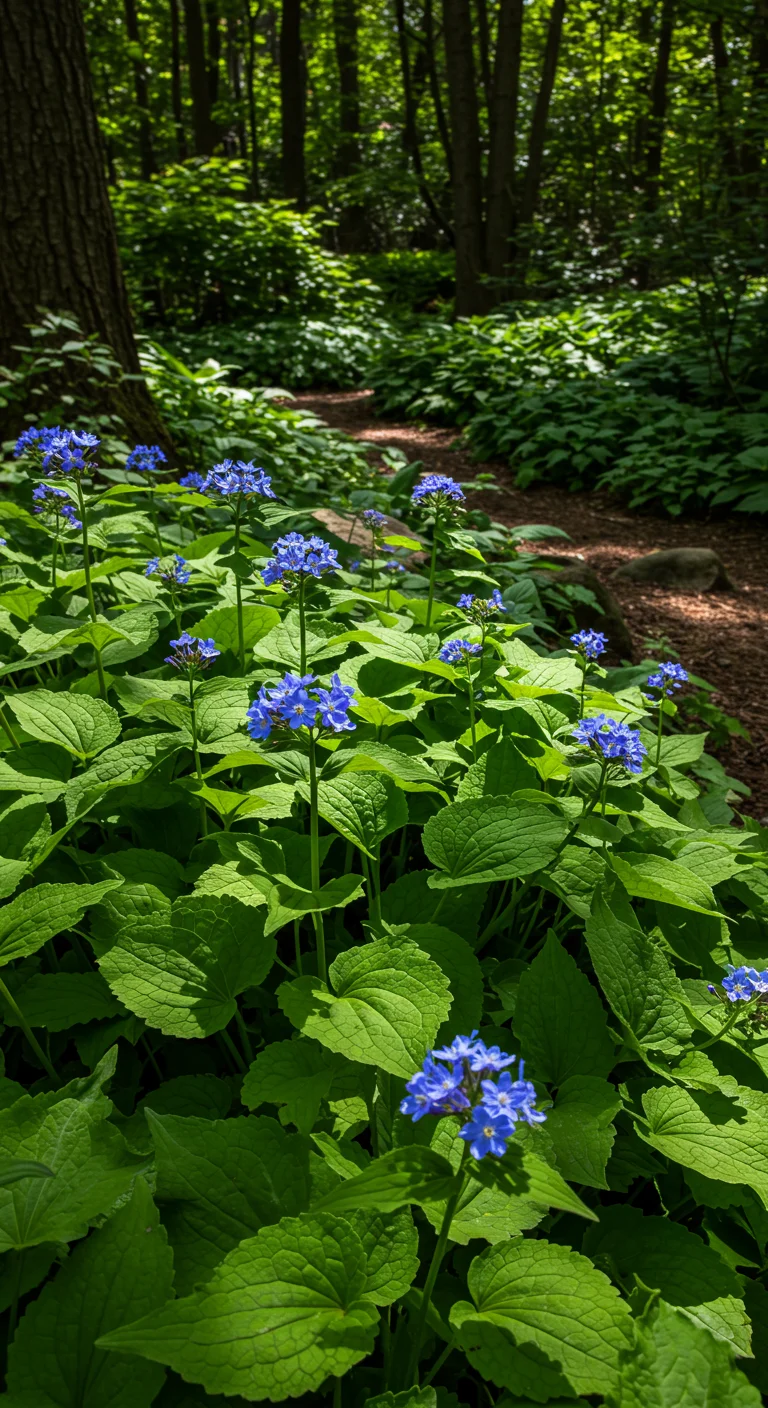
Brunnera, often referred to as False Forget-Me-Not, is a stunning perennial that thrives in shady gardens. Its heart-shaped leaves form a lush green backdrop for clusters of delicate, sky-blue flowers that bloom in spring, effectively capturing the charm of true forget-me-nots while offering greater resilience in various soil conditions. With a height of 12 to 24 inches, Brunnera is an ideal choice for borders and woodland gardens, where it can naturalize beautifully. Additionally, it is relatively low-maintenance, requiring only moderate watering and occasional deadheading to promote further blooming. This versatile plant is also deer-resistant, making it a perfect addition to gardens where wildlife is a concern. Plant Brunnera in well-drained, rich soil, and enjoy its enchanting blooms year after year.
4. Heuchera: Colorful Leaves for Dynamic Texture
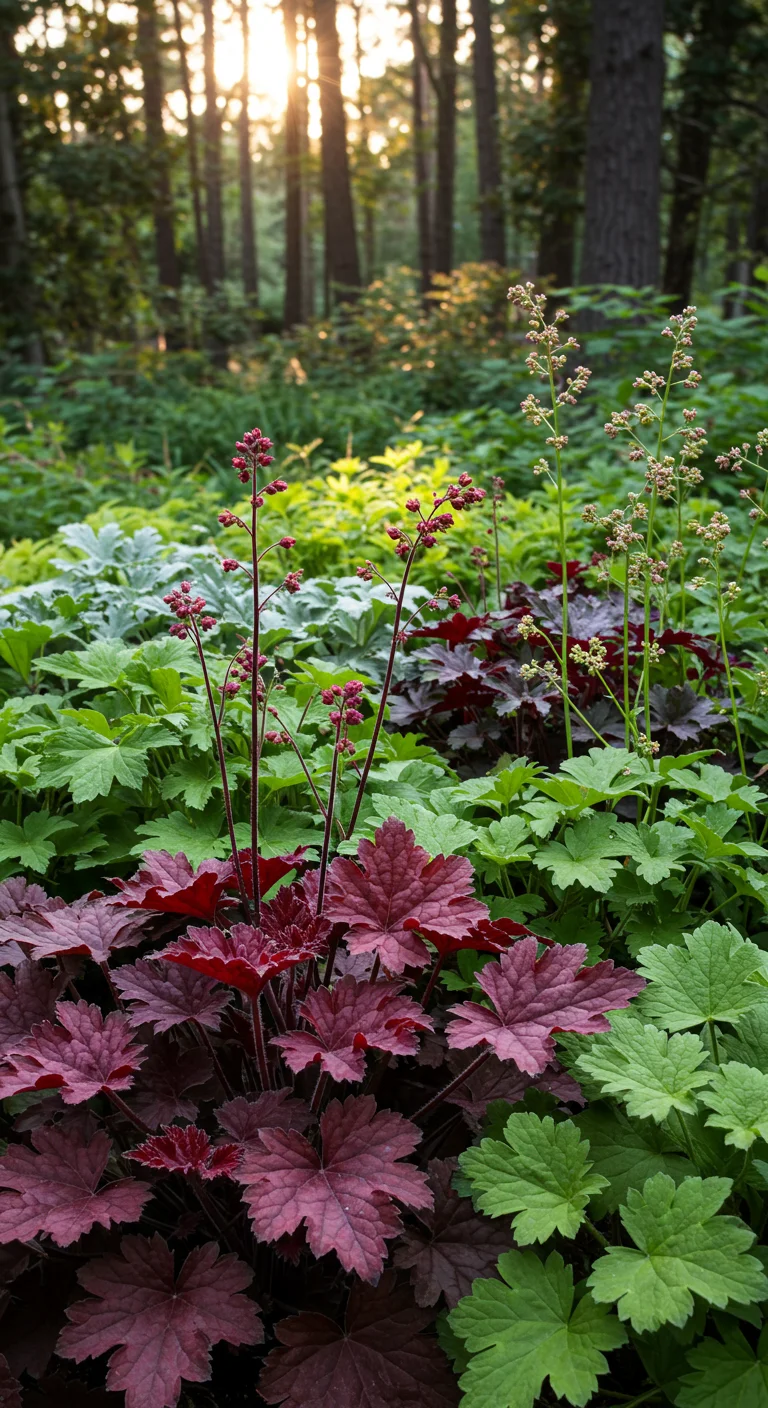
Heuchera, commonly known as coral bells, is a stunning perennial that thrives in shady gardens, offering vibrant foliage that ranges from deep burgundy to bright lime green. These plants are not only prized for their colorful leaves but also for their ability to add dynamic texture and interest throughout the growing season. Heuchera prefers well-drained soil and benefits from regular watering, especially during dry spells. Planting them in clusters can create a captivating display, as their diverse leaf shapes and colors contrast beautifully with other shade-loving plants. Additionally, Heuchera produces delicate flower spikes in late spring, attracting pollinators and adding vertical interest to your garden. With minimal maintenance, these hardy perennials are perfect for gardeners seeking to enhance their shade garden with color and texture.
5. Ferns: The Ancient Elegance of Shade
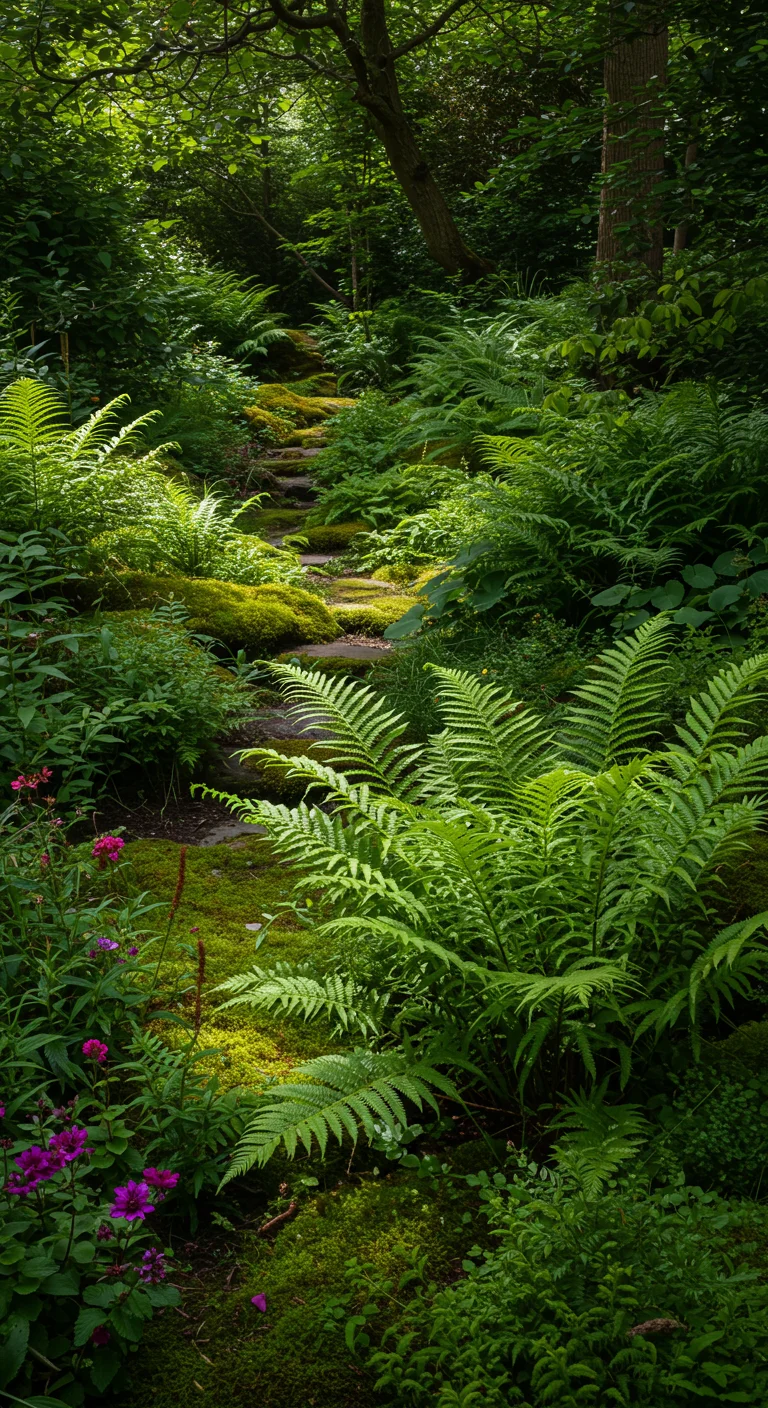
Ferns are the epitome of ancient elegance, thriving in the dappled shade of gardens and forests alike. With their lush, feathery fronds and diverse textures, they bring a sense of tranquility and sophistication to any shade garden. Popular varieties such as the Lady Fern (Athyrium filix-femina) and the Japanese Painted Fern (Athyrium niponicum) offer stunning visual interest, while their ability to tolerate low light and humidity makes them ideal companions for more vibrant shade perennials. To successfully incorporate ferns into your garden, ensure they are planted in well-draining, moist soil enriched with organic matter. Regular watering and occasional fertilization will keep them lush and vibrant, creating a stunning backdrop for flowering shade plants while adding depth and serenity to your garden design.
6. Pulmonaria: A Splash of Early Spring Color
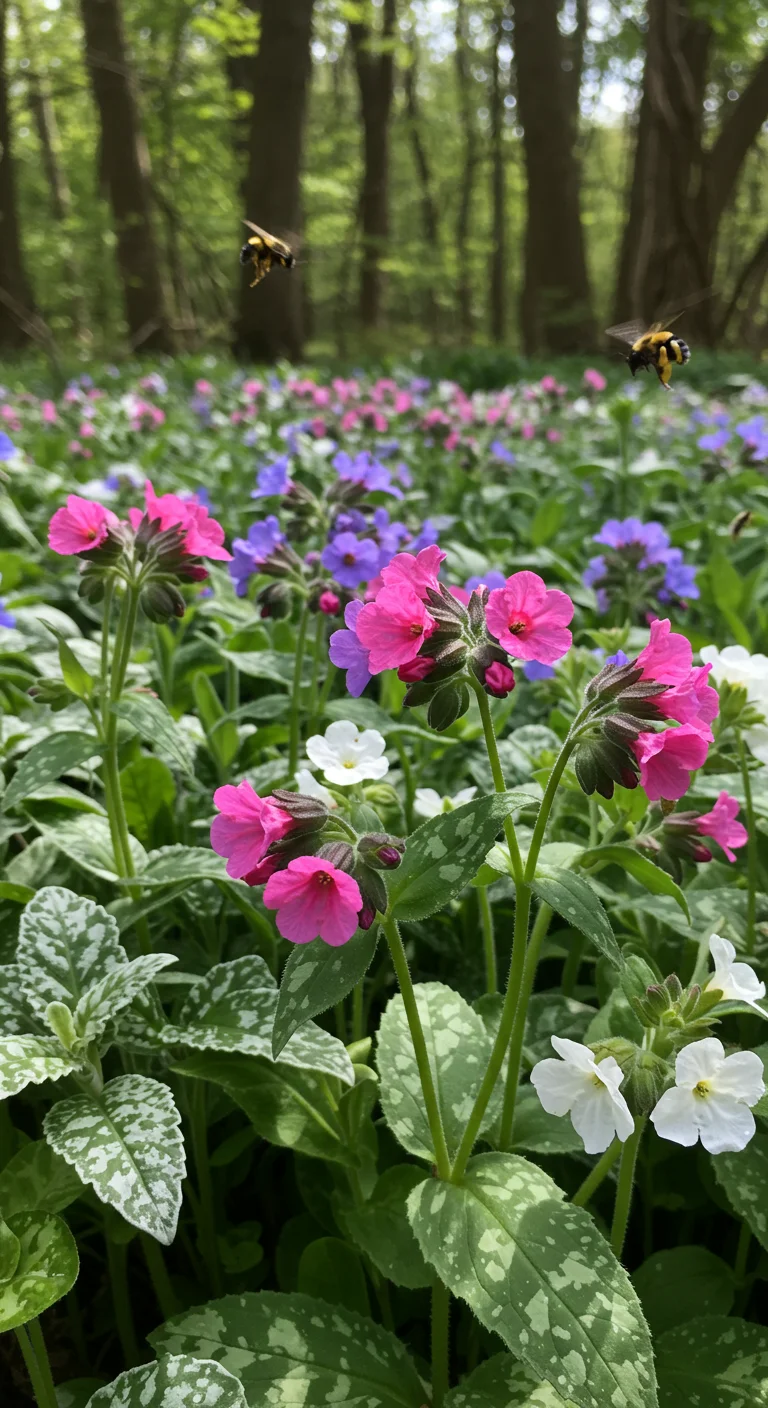
Pulmonaria, commonly known as lungwort, is a delightful addition to any shade garden, especially in early spring when it bursts into bloom with colorful clusters of bell-shaped flowers. These perennials feature striking foliage, often speckled with silver or white, which adds visual interest even when they are not in bloom. Ideal for moist, well-drained soil, Pulmonaria thrives in partial to full shade, making it perfect for under trees or in woodland gardens. Their flowers, which can be pink, blue, or white, provide a vibrant contrast against the lush green leaves, attracting early pollinators like bees. Additionally, this hardy plant is low-maintenance and can spread easily, offering a natural ground cover that helps suppress weeds while enhancing the overall aesthetic of your garden.
7. Tiarella: The Foam Flower’s Delicate Charm
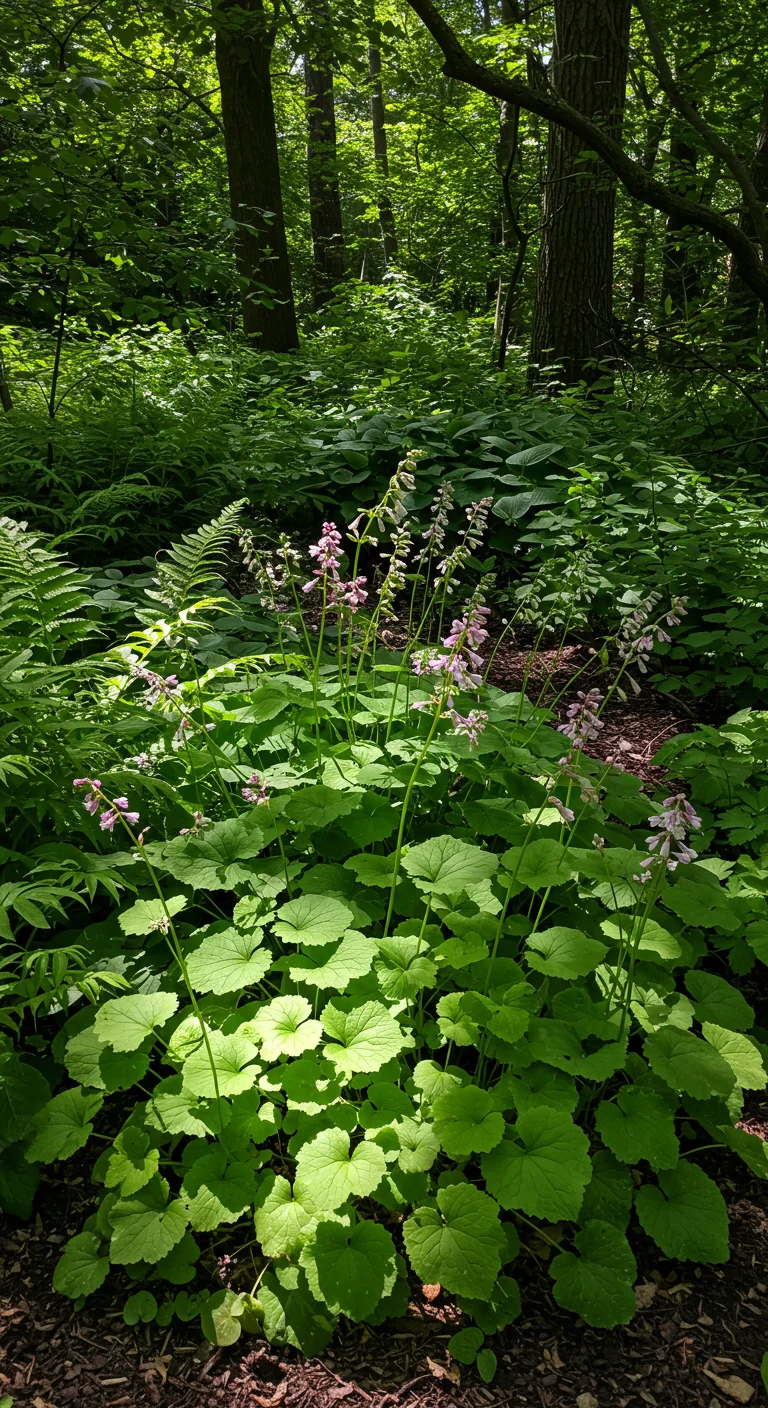
Tiarella, commonly known as foam flower, is a perennial favorite for shade gardens due to its delicate charm and low-maintenance nature. With its heart-shaped leaves and airy spikes of tiny white to pink flowers, Tiarella adds a graceful touch to any shady spot. Thriving in moist, well-drained soils, this plant prefers dappled sunlight and can tolerate full shade, making it perfect for under trees or in woodland gardens. Tiarella not only provides aesthetic appeal but also attracts pollinators like bees and butterflies, enhancing biodiversity in your garden. For optimal growth, mulch around the base to retain moisture and suppress weeds, ensuring these beautiful plants flourish season after season.
8. Japanese Anemones: Graceful Blooms in the Shade
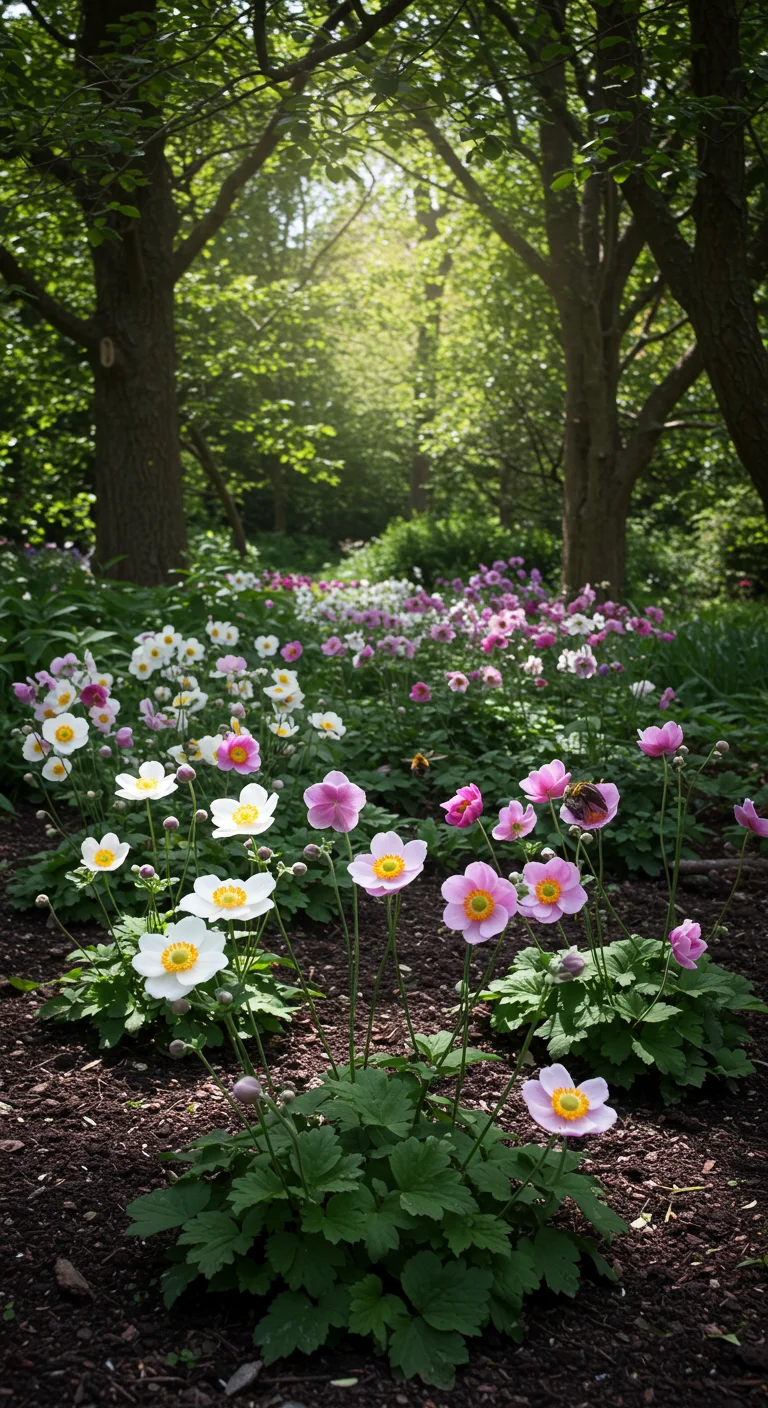
Japanese Anemones are a stunning addition to any shade garden, offering elegant blooms that can brighten up dimly lit areas. These perennials typically bloom from late summer to early fall, showcasing delicate white, pink, or lavender flowers that dance atop tall, slender stems. They thrive in well-drained, moist soil and prefer partial to full shade, making them perfect for woodland gardens or under tree canopies. Regular watering helps maintain their vigor, especially during dry spells. Additionally, Japanese Anemones are relatively low-maintenance, attracting pollinators like bees and butterflies while also providing a charming backdrop for other shade-loving plants. Their graceful presence adds a touch of sophistication to any garden, making them a must-have for shade enthusiasts.
9. Coral Bells: A Colorful Foliage Delight
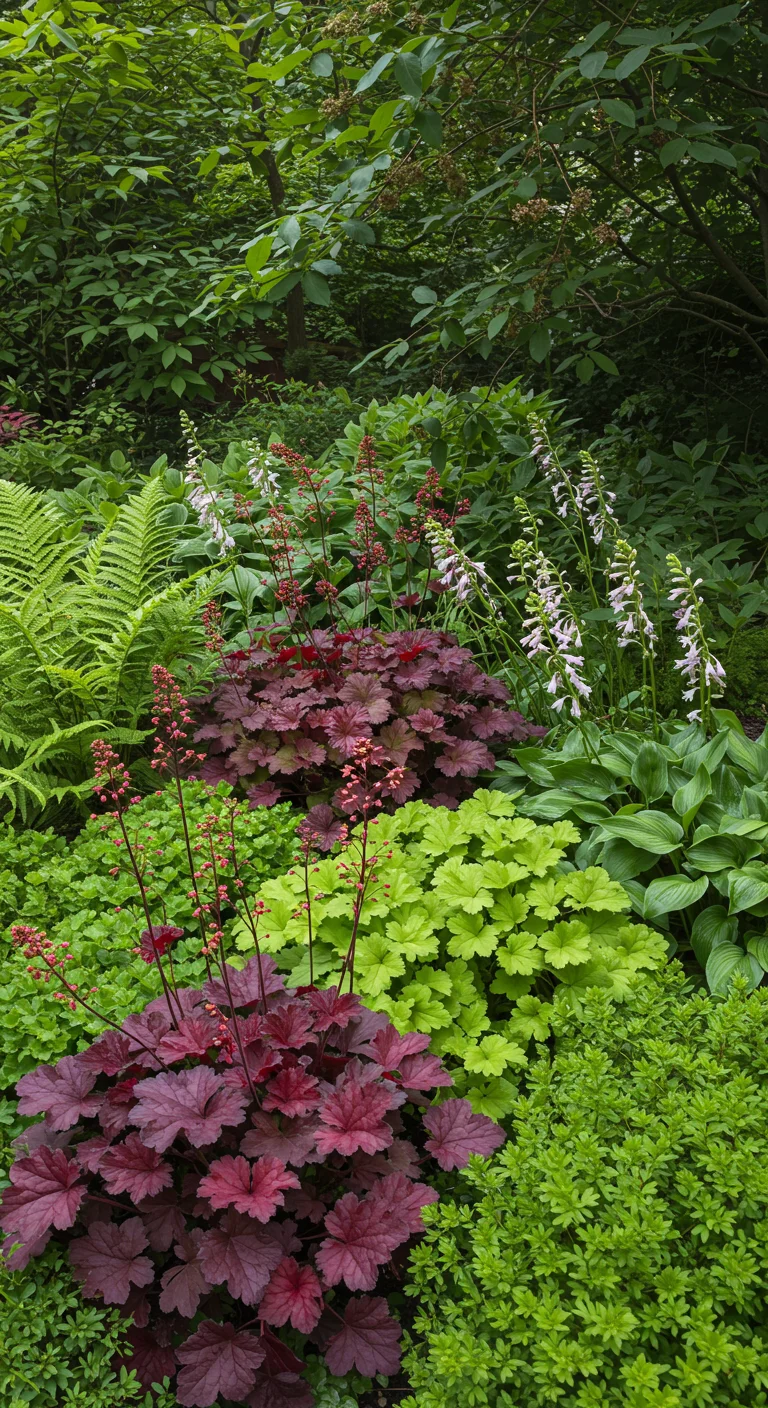
Coral Bells, or Heuchera, are an exceptional choice for shade gardens, offering a stunning variety of foliage colors that can brighten even the darkest corners. With leaves ranging from deep purple to vibrant lime green, these perennials create a striking contrast against the earthy tones of shaded environments. They thrive in well-drained soil and prefer moisture without being waterlogged, making them relatively low-maintenance. Additionally, Coral Bells produce delicate flower spikes in late spring, attracting hummingbirds and pollinators. For optimal growth, plant them in clusters for a lush, layered effect, and pair them with hostas or ferns to enhance the visual appeal of your shade garden. Their versatility and resilience ensure they remain a favorite among gardeners seeking a colorful foliage delight.
10. Lungwort: A Hardy Performer with Unique Leaves
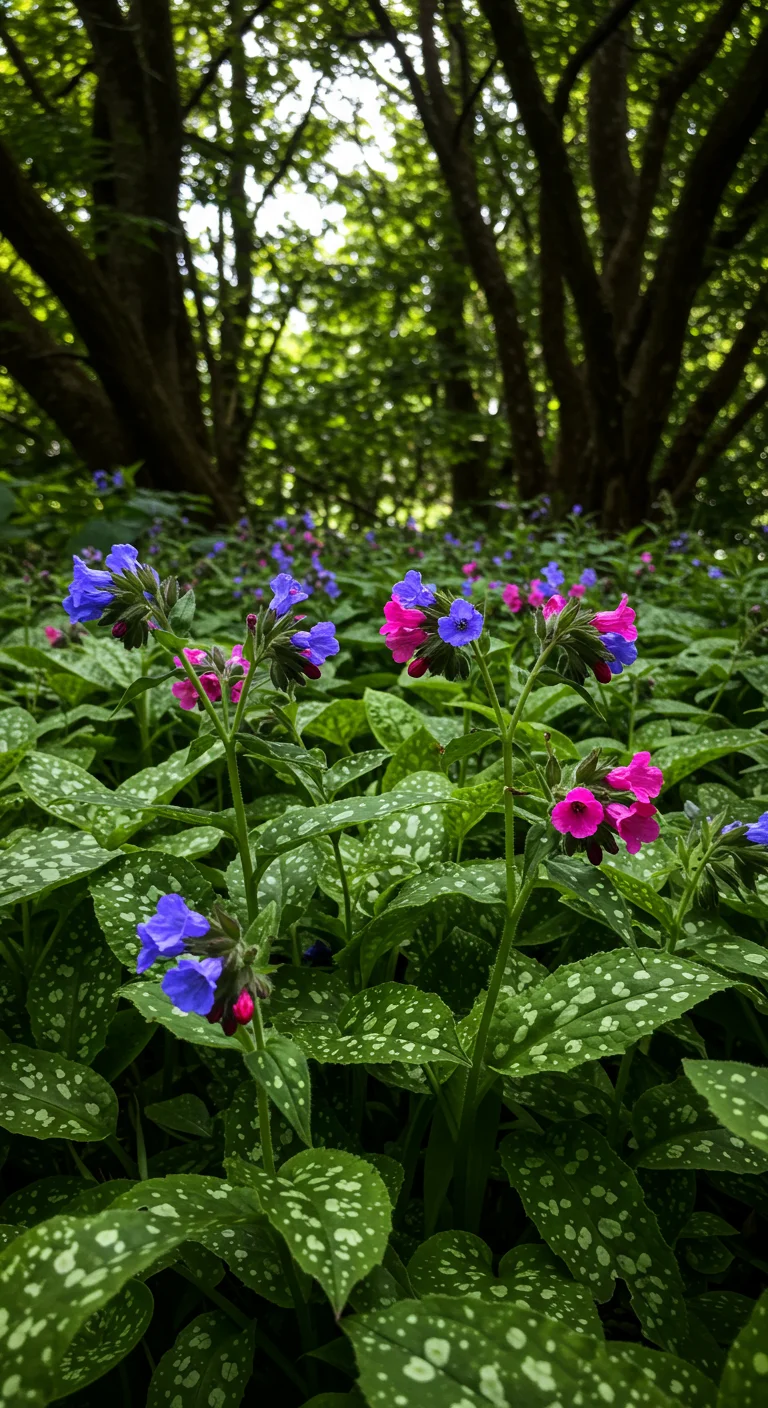
Lungwort (Pulmonaria) is a versatile perennial that thrives in shaded areas, making it an ideal choice for woodland gardens and under tree canopies. Its unique foliage, often speckled with silver or white spots, provides visual interest from spring through fall. Lungwort produces clusters of small, tubular flowers in early spring, typically in shades of blue, pink, or white, attracting pollinators such as bees and butterflies. This hardy performer prefers well-drained soil enriched with organic matter and can tolerate a range of moisture levels, making it a low-maintenance option for gardeners. Additionally, Lungwort’s ability to spread over time provides excellent ground cover, helping to suppress weeds and retain soil moisture, making it an invaluable asset in any shade garden design.
11. Solomon’s Seal: A Classic Woodland Favorite
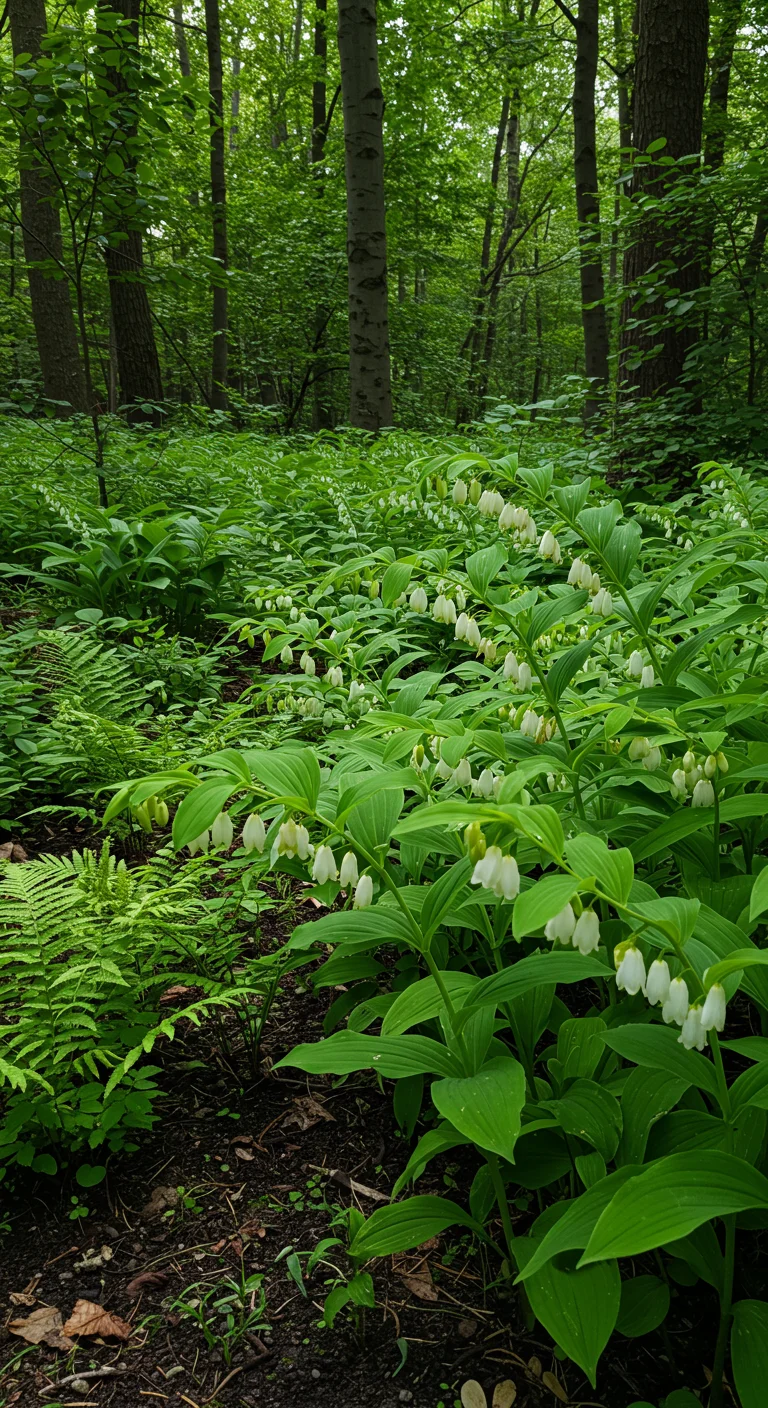
Solomon’s Seal (Polygonatum spp.) is a cherished perennial that thrives in shady woodland gardens, bringing a touch of elegance with its arching stems and delicate, bell-shaped flowers. Hardy in USDA zones 3 to 9, this plant is exceptionally low-maintenance, requiring only moist, well-drained soil and partial to full shade to flourish. It typically grows between 1 to 3 feet tall, forming graceful clumps that can spread over time, making it an excellent choice for ground cover. Solomon’s Seal not only offers visual interest with its lush foliage but also attracts pollinators, such as bees and hummingbirds. For those looking to enhance their shade garden, incorporating this classic favorite will provide year-round beauty and texture, particularly in spring when its charming flowers bloom.
12. Trillium: Nature’s Perfect Triad
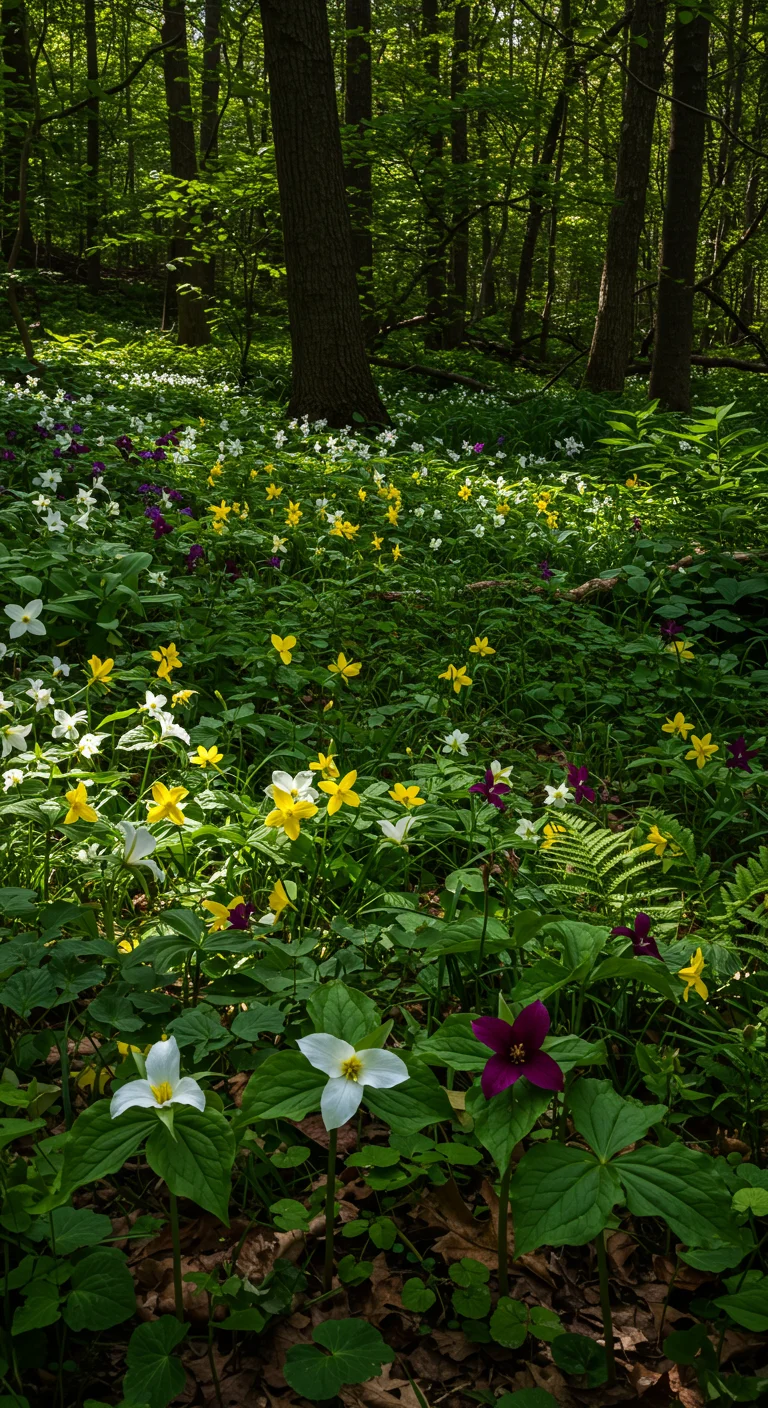
Trillium, often referred to as ‘wood lily,’ is a captivating perennial that thrives in the shade, making it a perfect addition to any woodland garden. This genus of flowering plants boasts a stunning triadic flower structure, typically with three petals, three sepals, and three leaves, creating a harmonious and symmetrical appearance. Trilliums prefer rich, well-drained soil and benefit from a layer of leaf mulch to retain moisture. They bloom in early spring, showcasing colors ranging from white and yellow to deep purple, attracting early pollinators such as bees and butterflies. As a slow-growing plant, patience is key, but once established, trilliums can naturalize beautifully, creating a breathtaking carpet of blooms that bring life and color to shaded areas of your garden.
13. Epimedium: The Barrenwort’s Resilient Beauty
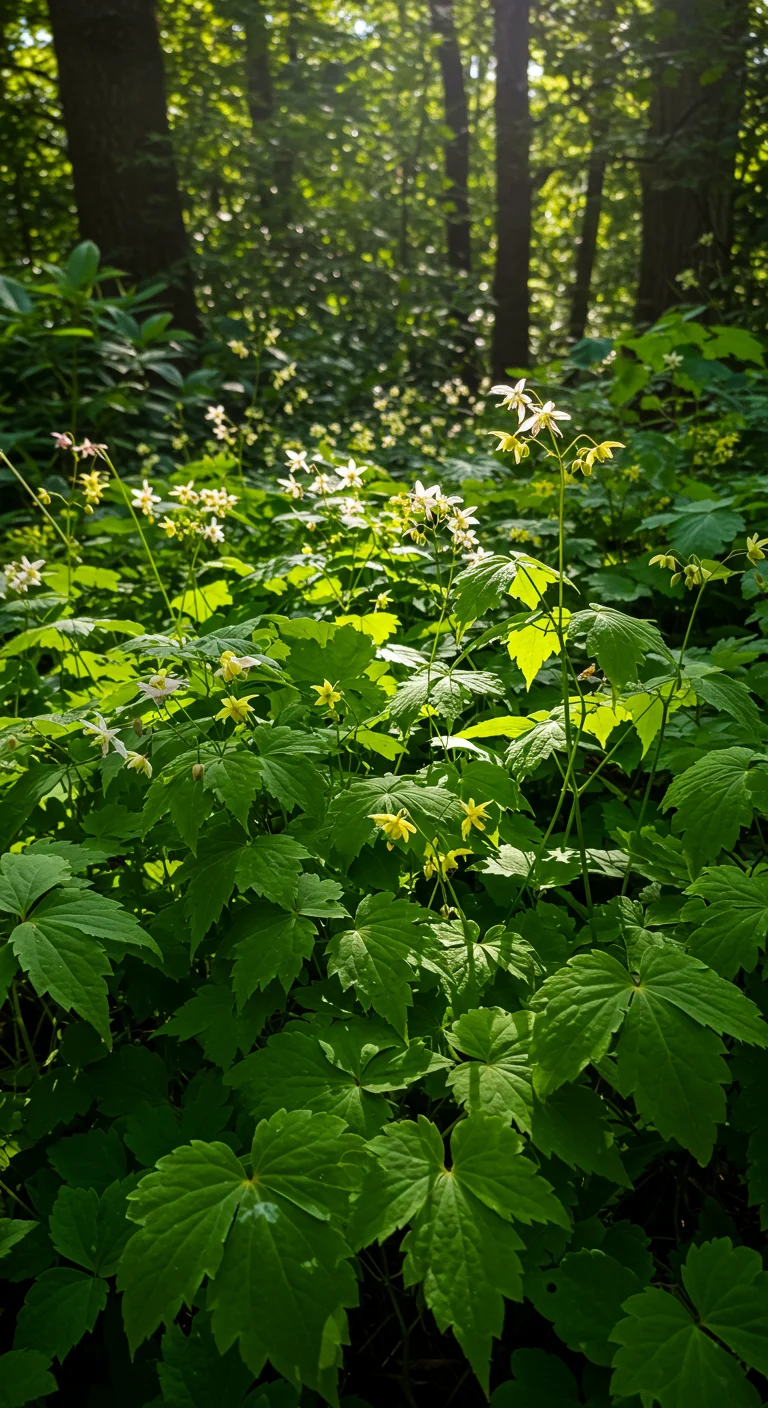
Epimedium, commonly known as Barrenwort, is a stunning perennial perfect for adding charm to shaded garden areas. With its heart-shaped leaves and delicate, often nodding flowers that bloom in spring, Epimedium brings a unique texture and color to low-light environments. This resilient plant thrives in well-drained soil and can tolerate various conditions, from dry shade under trees to moist woodland gardens. Some popular varieties include Epimedium grandiflorum, known for its larger blooms, and Epimedium x rubrum, which showcases vibrant red flowers. Besides their ornamental beauty, many species are also deer-resistant, making them an excellent choice for gardeners looking to maintain a lush, low-maintenance landscape. Regular division every few years can help keep these perennials healthy and vigorous, ensuring that they continue to brighten your shade garden for years to come.
14. Bleeding Heart: The Romantic Showstopper
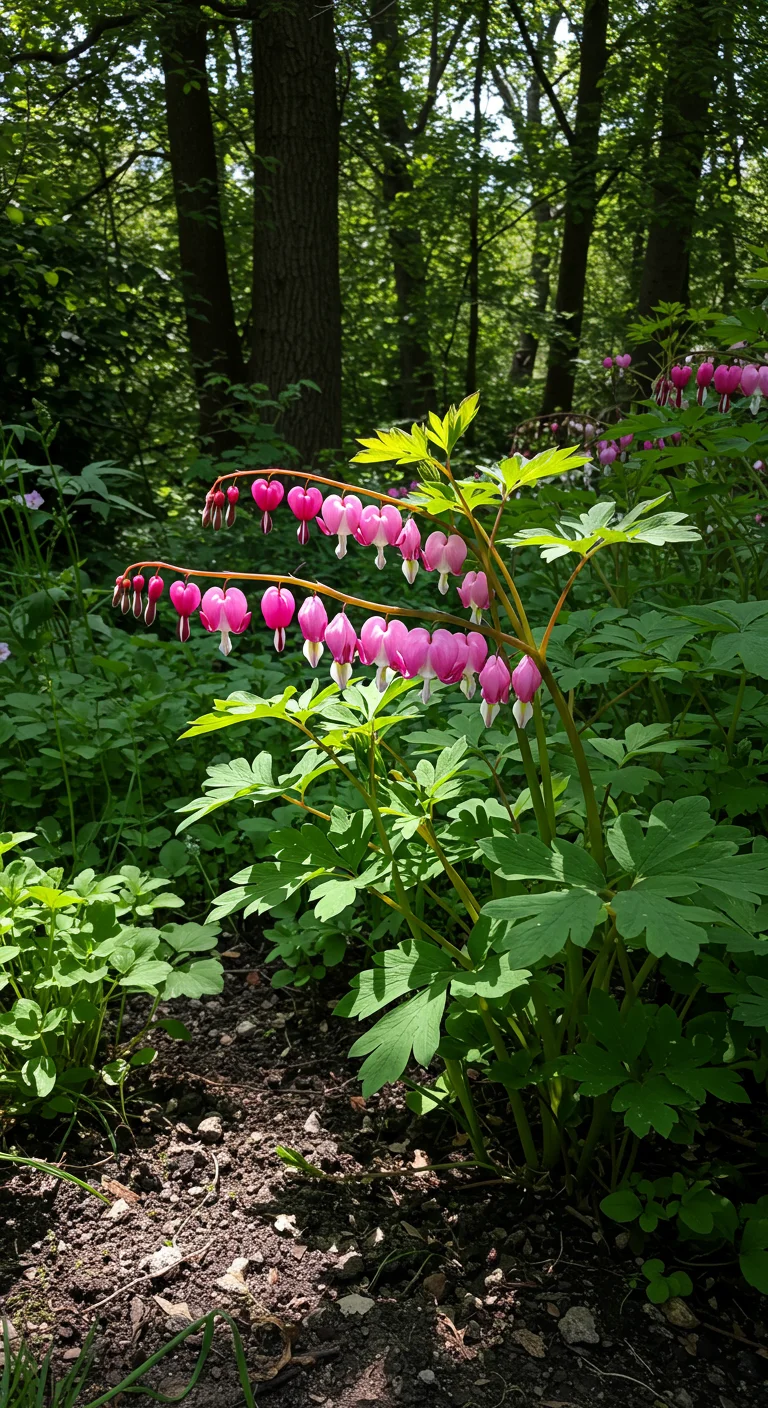
Bleeding Heart (Dicentra spectabilis) is a perennial favorite for shade gardens, renowned for its heart-shaped blossoms that dangle gracefully from arching stems. Blooming in spring to early summer, these enchanting flowers come in shades of pink and white, making them an ideal romantic focal point. They thrive in moist, well-drained soil enriched with organic matter and prefer partial to full shade, which mimics their native woodland habitat. Once established, Bleeding Hearts can be low-maintenance, requiring minimal care aside from regular watering and occasional division every few years. Their lush, fern-like foliage provides a charming backdrop, making them perfect for creating a serene, romantic atmosphere in your garden design. Pair them with ferns or hostas for a stunning visual contrast that enhances their captivating beauty.
15. Columbine: Charming Blooms for Partial Shade
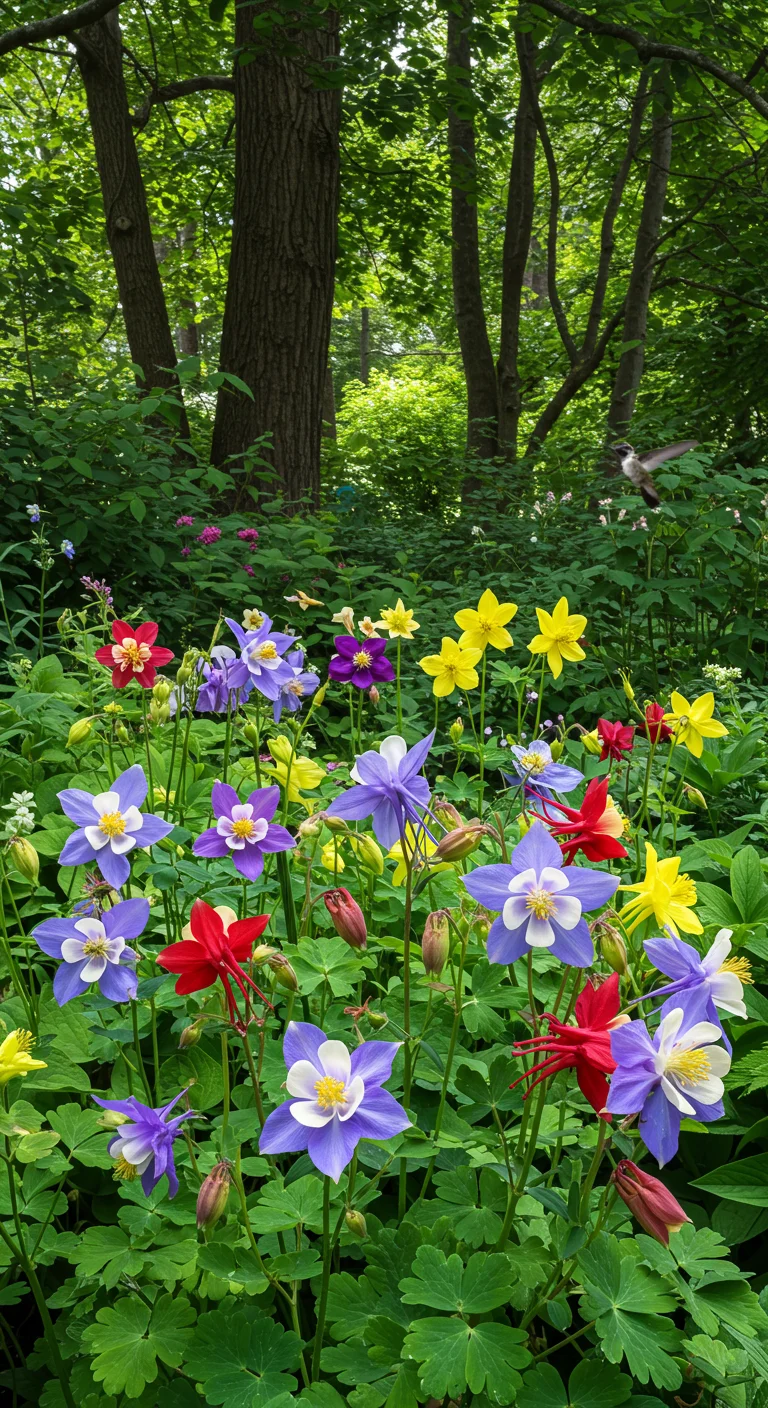
Columbine, with its charming, intricate flowers, is a perfect addition to any partial shade garden. These perennial plants, belonging to the Aquilegia genus, bloom from late spring to early summer, showcasing delightful nodding blossoms in a variety of colors, including blues, purples, reds, and yellows. They thrive in well-drained soil enriched with organic matter and prefer a location that receives morning sun and afternoon shade. Columbines attract pollinators like bees and hummingbirds, making them a beneficial choice for your garden ecosystem. Additionally, they are relatively low-maintenance, requiring minimal watering once established, and can self-seed, ensuring a lovely display year after year. Their unique flower shape and delicate foliage add an enchanting touch to any shaded area, providing both beauty and ecological value to your landscape.
16. Ligularia: A Bold Statement with Golden Flowers
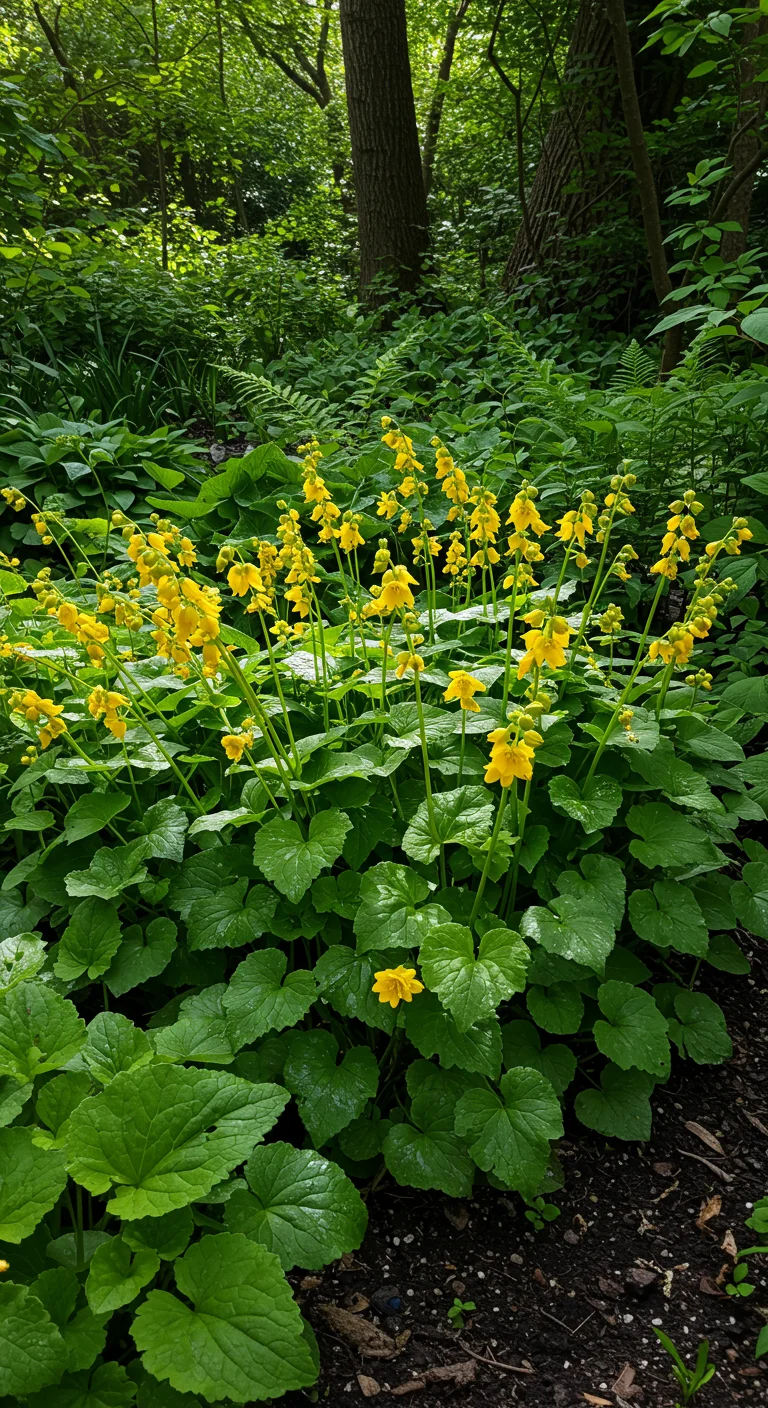
Ligularia, often known as ‘Goldenray’ or ‘Butterweed’, is a striking perennial that thrives in shady garden spots with moist, rich soil. Its bold, heart-shaped leaves provide a dramatic backdrop, while its tall stalks burst forth with clusters of vibrant yellow flowers in late summer, creating a stunning contrast against the foliage. These plants can grow between 2 to 4 feet tall, making them excellent for the back of a border or as focal points in a shade garden. Ligularia is not only visually appealing but also attracts pollinators like bees and butterflies, enhancing the ecological value of your garden. Ensure they receive adequate moisture, especially in hotter months, to maintain their lush appearance and prevent wilting.
17. Dicentra: The Heart-Shaped Wonder
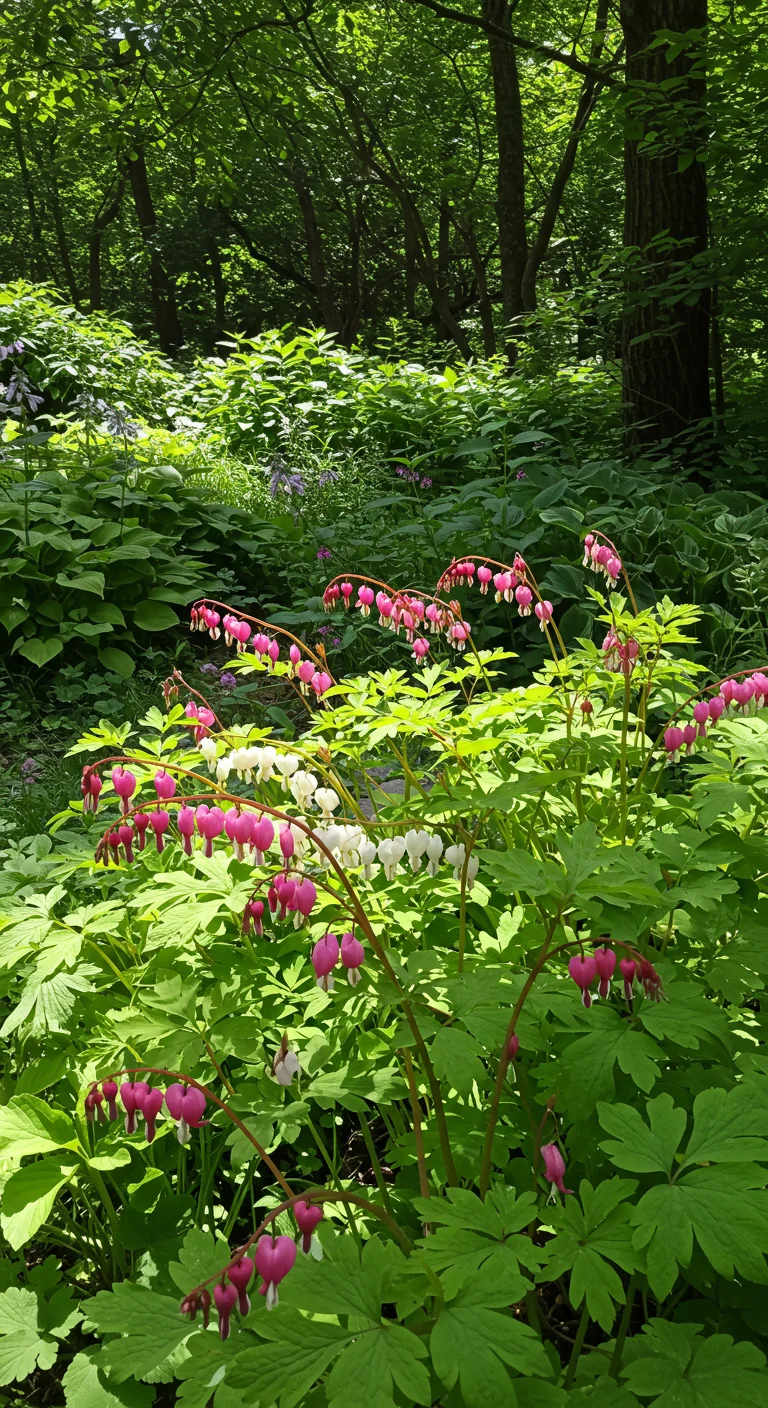
Dicentra, commonly known as bleeding heart, is a captivating perennial that thrives in shaded garden areas, making it a perfect choice for those looking to add charm to low-light spaces. With its unique heart-shaped flowers, which bloom in shades of pink, white, and red, Dicentra creates a stunning visual display from spring to early summer. This plant prefers well-drained, moist soil enriched with organic matter and can grow up to 2-3 feet tall, making it an excellent backdrop for shorter perennials. Its fern-like foliage adds texture and interest even when the flowers fade. When planting Dicentra, be sure to provide enough space for its spreading habit and consider pairing it with other shade-loving plants like ferns and hostas for a lush, layered effect in your garden.
18. Jack-in-the-Pulpit: A Woodland Mystery
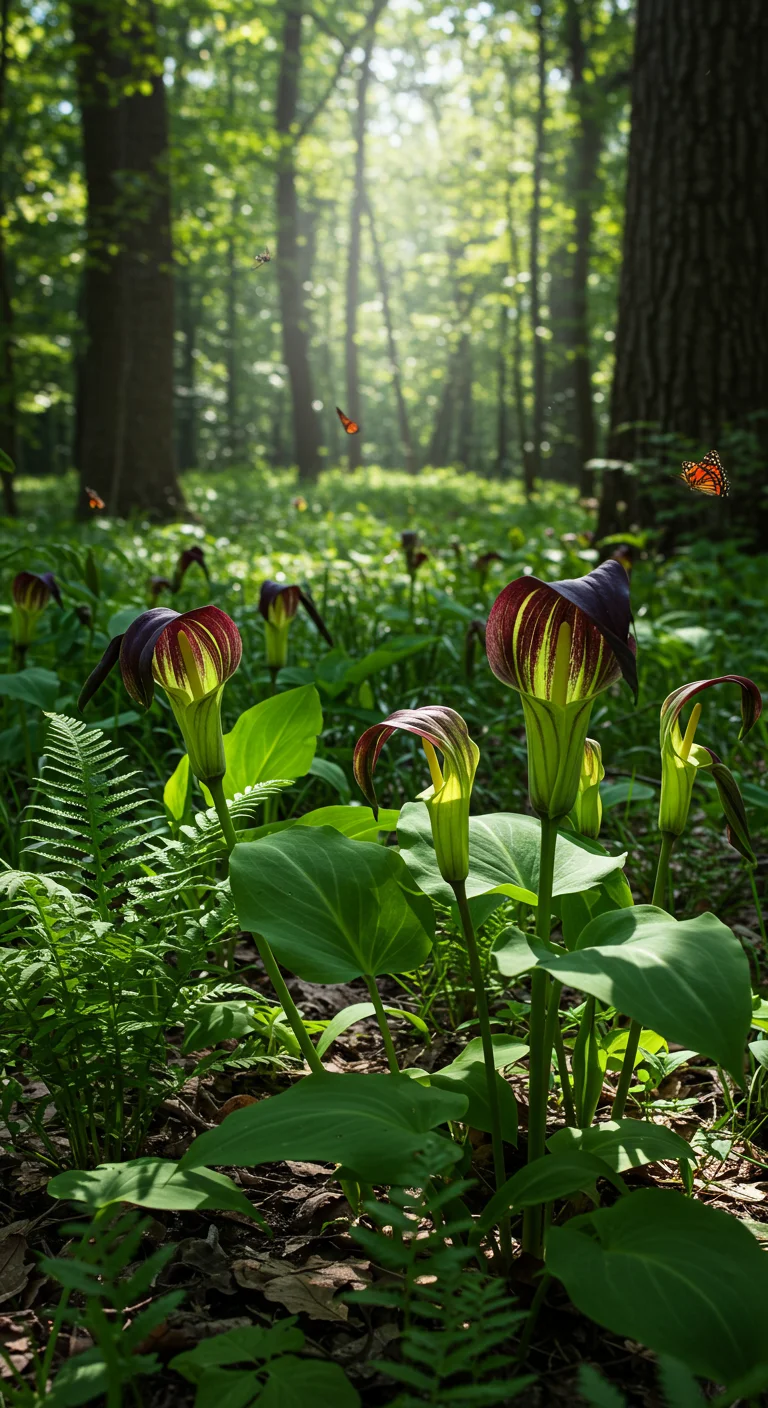
The Jack-in-the-Pulpit (Arisaema triphyllum) is a fascinating perennial that thrives in the cool, shaded woodlands of North America. Known for its unique hooded flower structure resembling a pulpit, this plant is both a conversation starter and a favorite among shade garden enthusiasts. Growing to about 2-3 feet tall, its striking green and purple spathes emerge in spring, creating an enchanting display against the backdrop of lush foliage. Jack-in-the-Pulpit prefers moist, well-drained soil enriched with organic matter, making it ideal for woodland gardens or shaded borders. Additionally, this perennial attracts pollinators like bees and butterflies, contributing to the ecological balance of your garden. However, it’s important to note that all parts of the plant are toxic if ingested, so caution is advised around pets and children.
19. Hellebores: The Winter Rose for Shady Spots
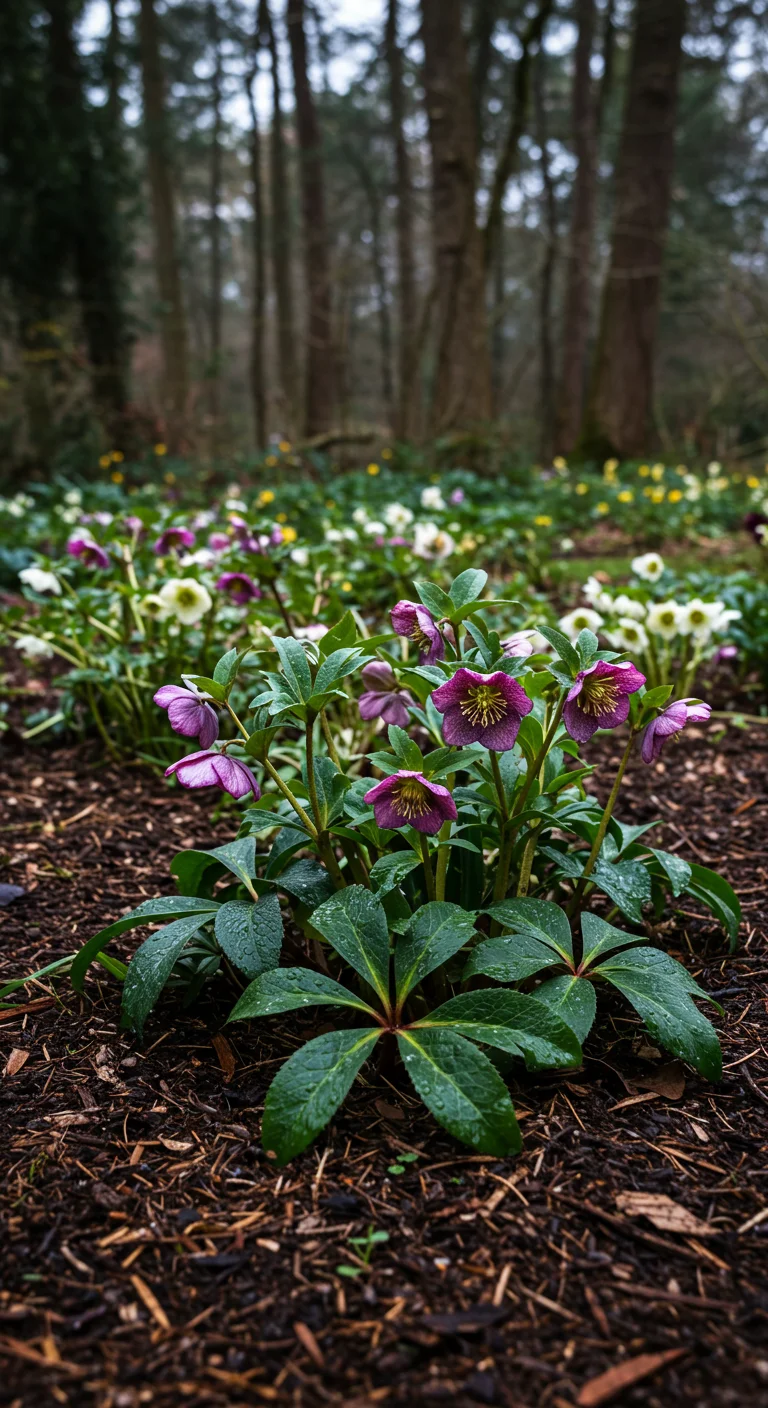
Hellebores, often referred to as the ‘Winter Rose’, are a fantastic choice for shady spots in the garden, blooming from late winter to early spring with delicate, nodding flowers that come in a range of colors from deep purples and pinks to vibrant whites. These perennial plants thrive in partial to full shade and are remarkably resilient, requiring minimal care once established. They prefer well-drained soil enriched with organic matter, and their evergreen foliage provides year-round interest. Hellebores are also deer-resistant, making them ideal for gardens where browsing animals are a concern. To maximize their beauty, plant them in groups for a stunning display, and consider pairing them with early spring bulbs to create a colorful, layered effect in shaded areas.
20. Sweet Woodruff: A Fragrant Ground Cover
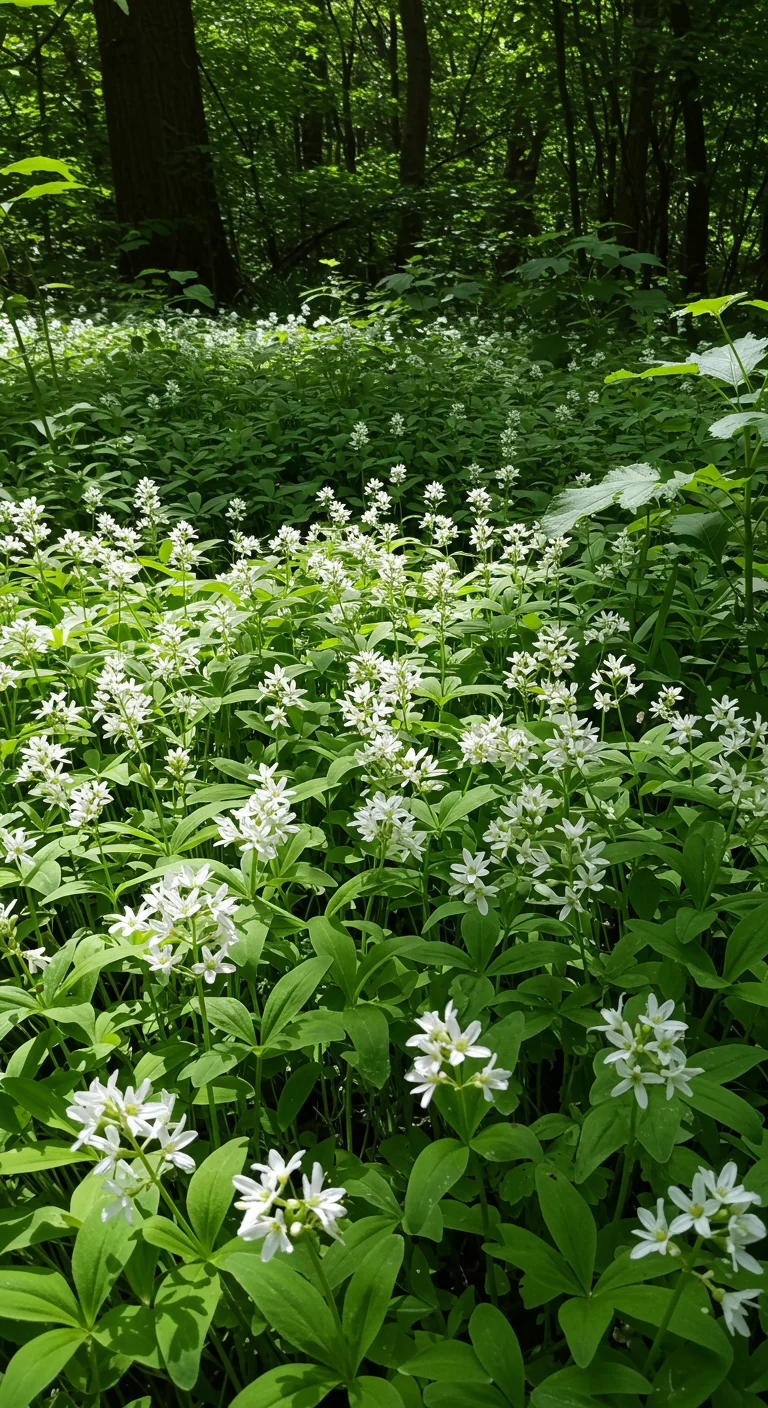
Sweet Woodruff (Galium odoratum) is a delightful ground cover that thrives in shady areas, making it an excellent choice for woodland gardens or under trees. This perennial features whorled, lance-shaped leaves and small, star-like white flowers that bloom in spring, emitting a sweet, hay-like fragrance that attracts beneficial pollinators. Ideal for moist, well-drained soil, Sweet Woodruff can spread quickly, creating a lush carpet that suppresses weeds. It’s important to note that while it can tolerate dry spells, it prefers consistent moisture. Additionally, this plant is deer-resistant, making it a practical option for gardens in areas with wildlife. Sweet Woodruff can also be used in herbal crafts or as a flavoring agent in beverages, adding both beauty and utility to your shade garden.
21. Cimicifuga: The Bugbane’s Tall Elegance
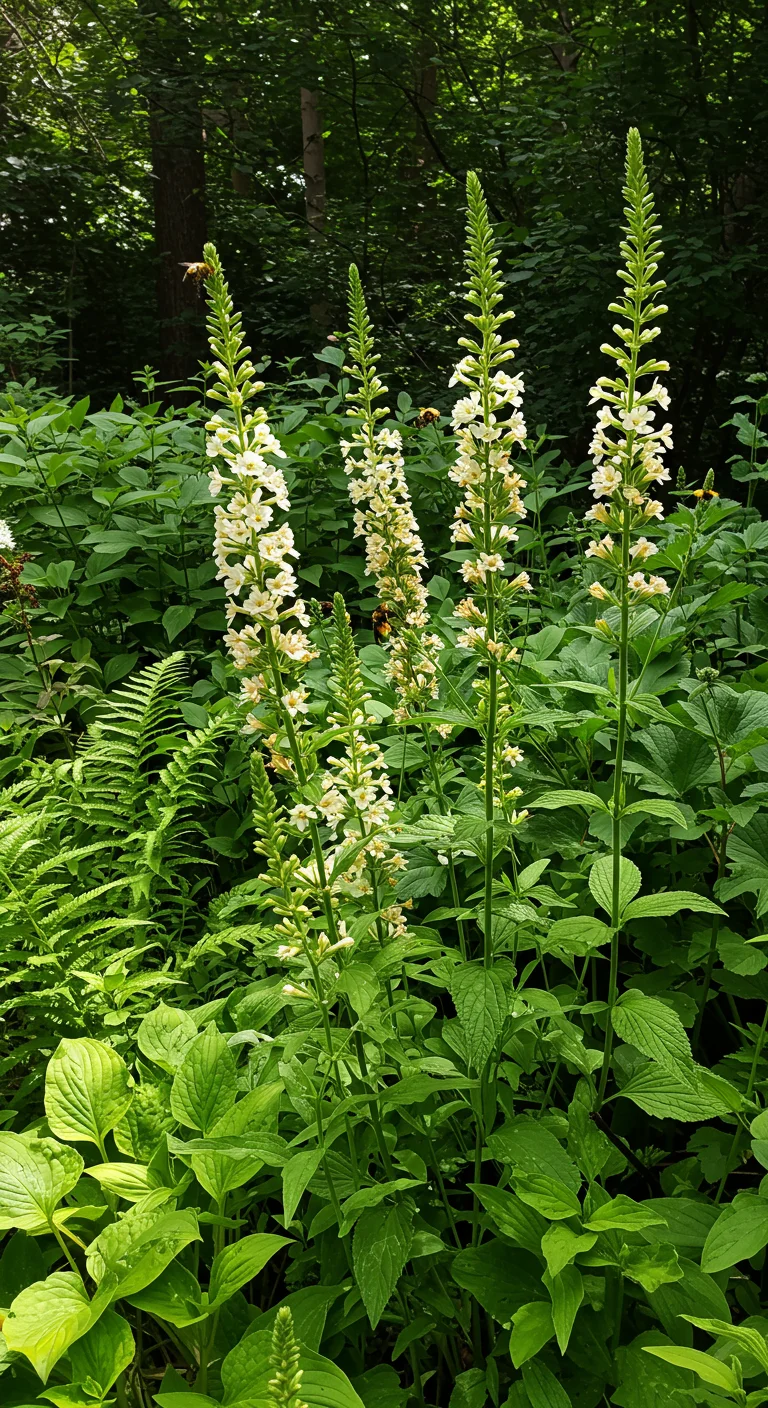
Cimicifuga, commonly known as Bugbane, is a stunning perennial that adds height and elegance to any shade garden. Reaching heights of 3 to 6 feet, its tall, slender spikes are adorned with delicate, creamy-white flowers that bloom from late summer to fall, providing a striking contrast against the lush green backdrop of foliage. This plant thrives in moist, well-drained soil and prefers partial to full shade, making it an ideal choice for woodland gardens or shady borders. Additionally, Cimicifuga is known for its ability to attract pollinators while repelling certain pests, showcasing its dual functionality in the garden. Its graceful stature and fragrant blooms make it a must-have for shade enthusiasts seeking to create a visually captivating and serene outdoor space.
22. Pulmonaria ‘Moonlight’: A Stunning Variegated Option
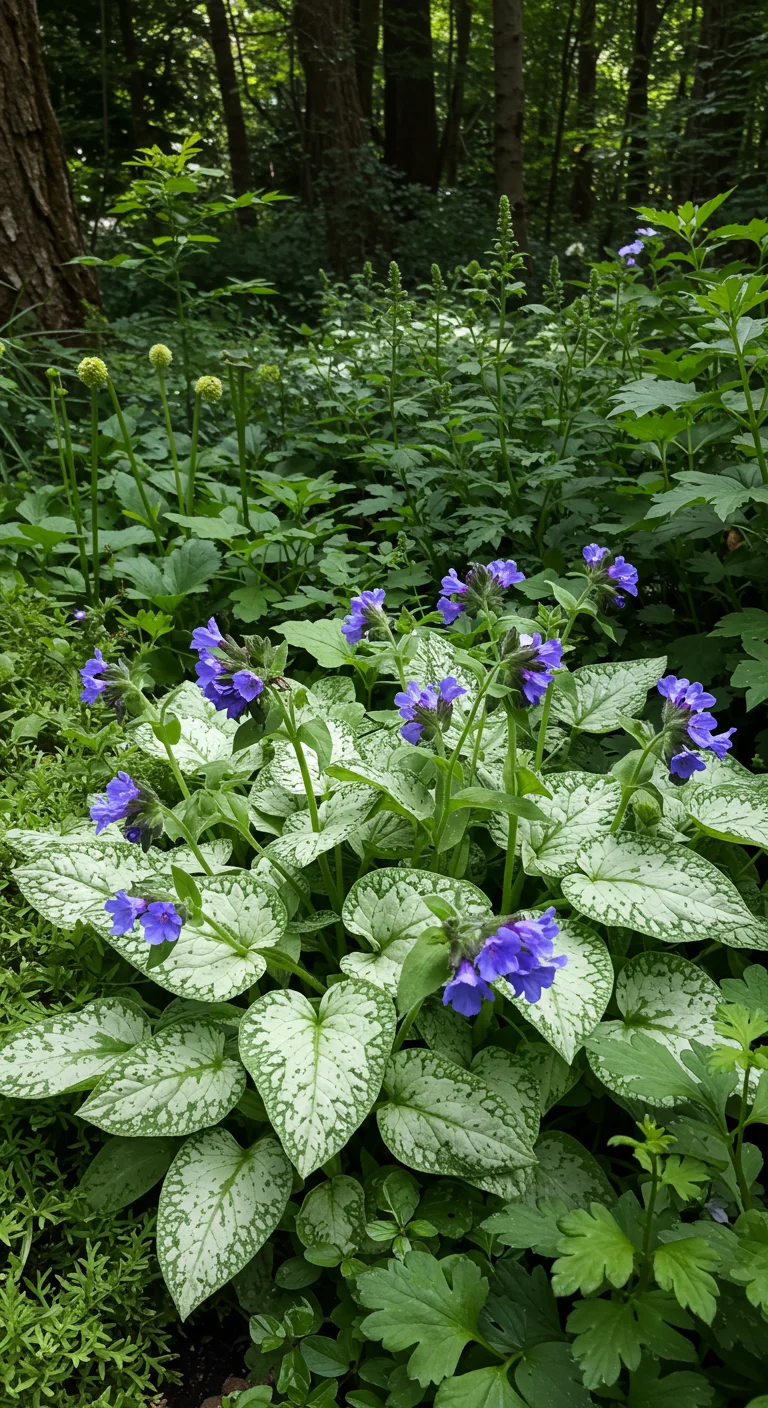
Pulmonaria ‘Moonlight’ is a striking perennial that thrives in shady gardens, making it an ideal choice for those looking to brighten up darker spaces. This plant features stunning silvery-white leaves that are intricately veined, providing a beautiful contrast against its clusters of vivid blue flowers that bloom in early spring. ‘Moonlight’ not only adds visual interest with its variegated foliage but also attracts pollinators like bees and butterflies. It grows best in moist, well-drained soil and prefers partial to full shade, making it a perfect addition for under trees or beside shaded patios. Additionally, this resilient plant is relatively low-maintenance, requiring only occasional watering and division to maintain its vigor, ensuring that your garden remains lush and vibrant throughout the growing season.
23. Acanthus: The Bear’s Breeches Bold and Beautiful
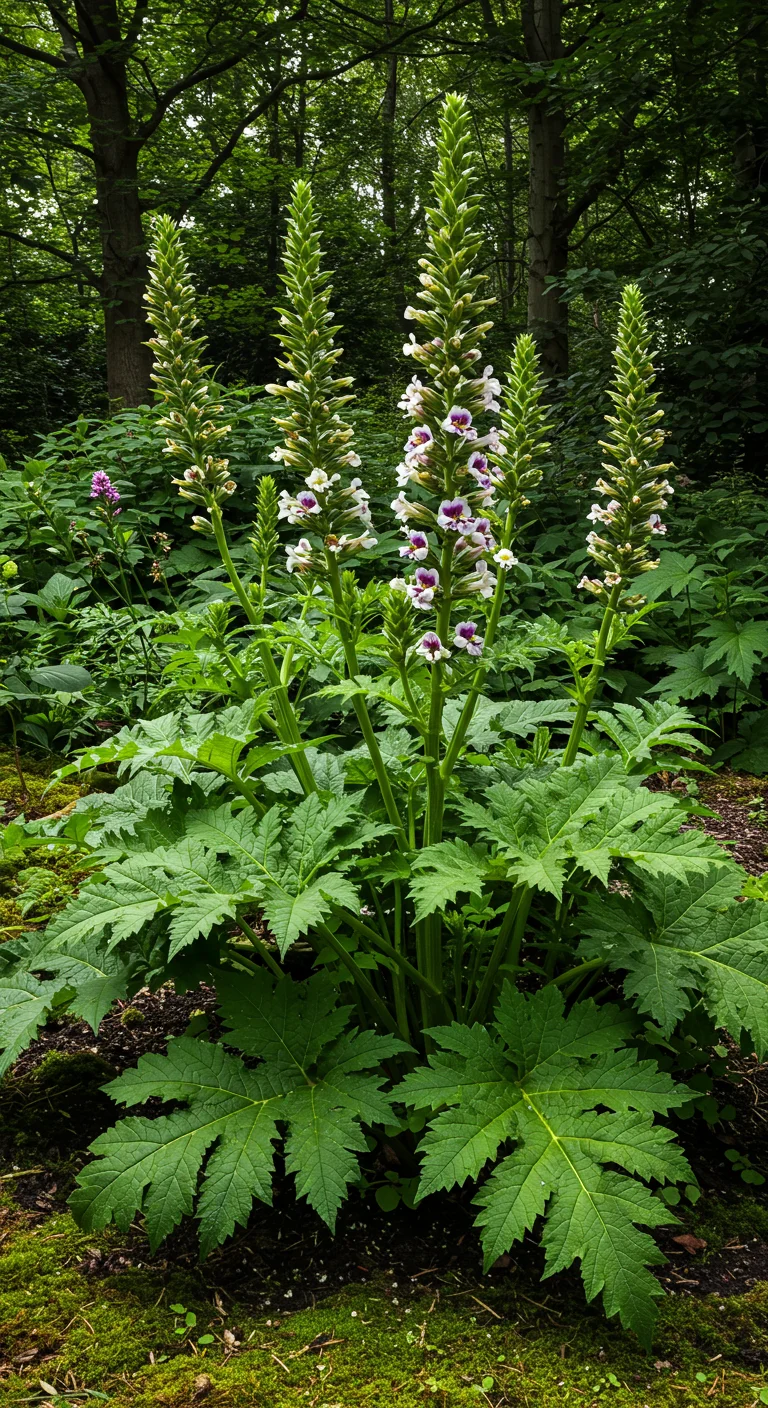
Acanthus, commonly known as Bear’s Breeches, is an exceptional perennial that thrives in shady garden spots, offering bold foliage and striking flower spikes. With its large, deeply lobed leaves, Acanthus provides a dramatic texture that enhances the visual appeal of any shaded area. The plant produces tall, architectural flower spikes adorned with white and purple blooms that attract pollinators while adding vertical interest to the garden. Ideal for planting in well-drained soil, Acanthus is drought-tolerant once established and can withstand various soil types. To ensure optimal growth, provide some protection from harsh winds and consider grouping plants together to create a lush, layered effect. This perennial is not only low-maintenance, but it also brings a touch of elegance to your shade garden, making it a must-have for any gardener looking to make a statement.
24. Sarcococca: The Fragrant Sweet Boxwood
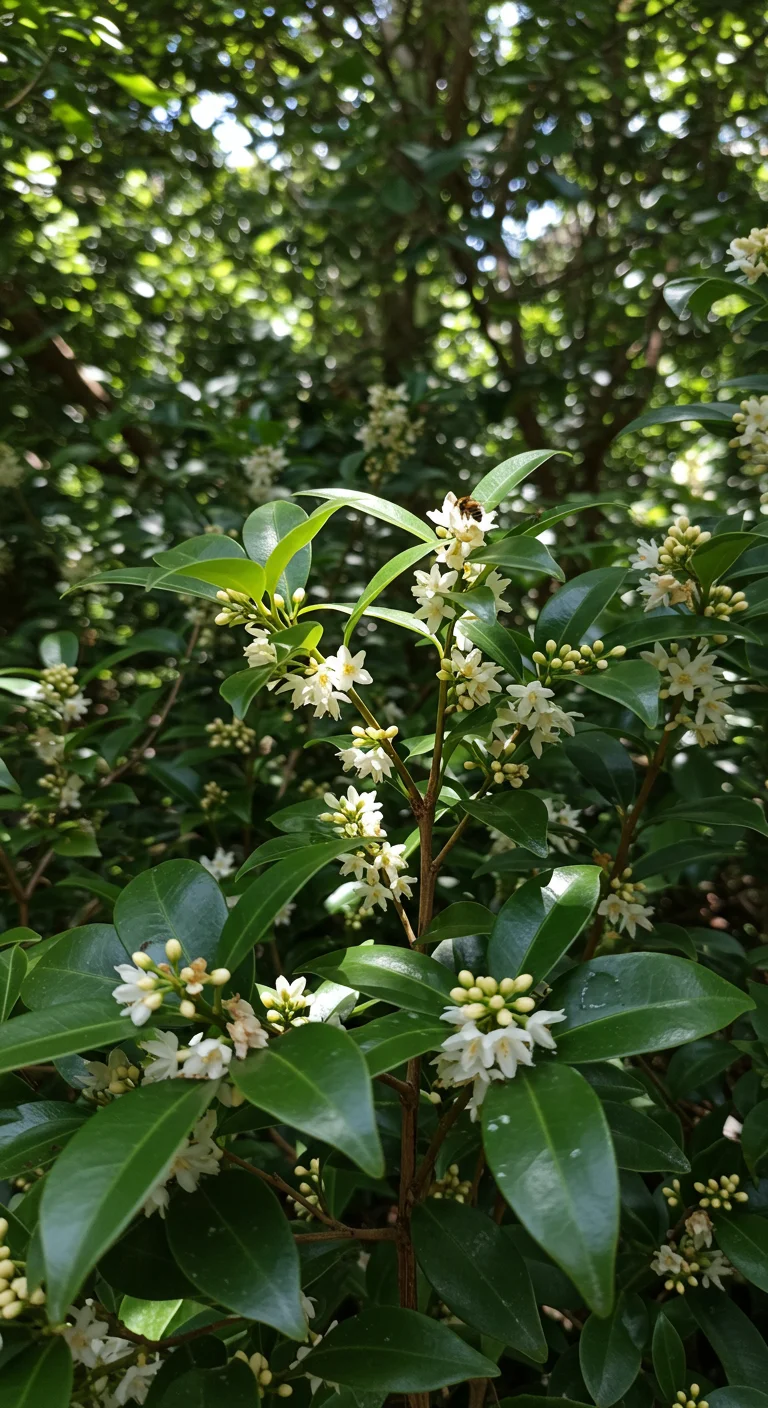
Sarcococca, commonly known as the fragrant sweet boxwood, is an exceptional perennial that thrives in shaded gardens, making it a perfect choice for low-light areas. This evergreen shrub features glossy, dark green leaves and produces clusters of small, fragrant white flowers in late winter to early spring, which not only add beauty but also attract pollinators. Sarcococca is remarkably low-maintenance and tolerant of varying soil conditions, though it prefers well-draining, moist soil. Its compact size, reaching 2-3 feet in height, makes it ideal for borders or as a foundation plant. Additionally, the plant’s berries, which develop after flowering, provide visual interest throughout the fall and winter months, enhancing the garden’s seasonal appeal.

